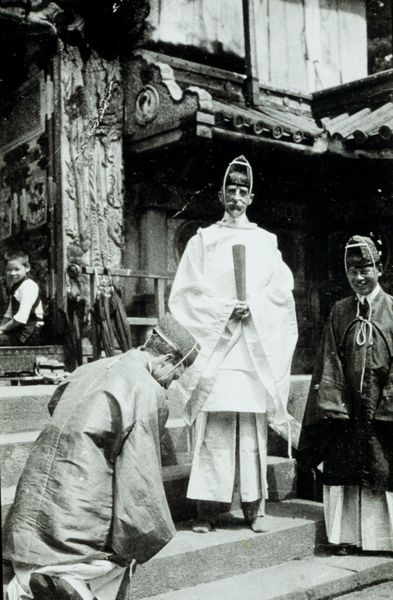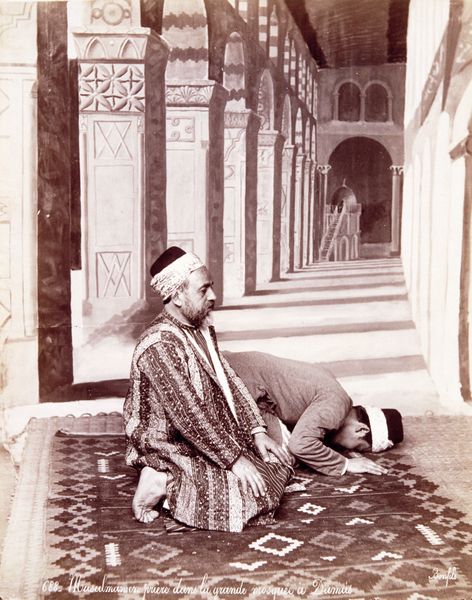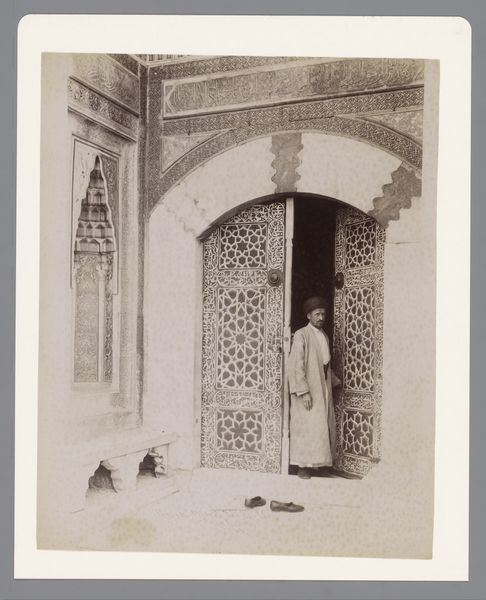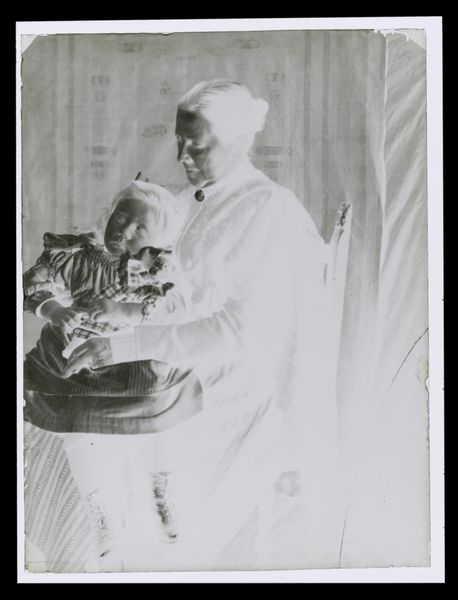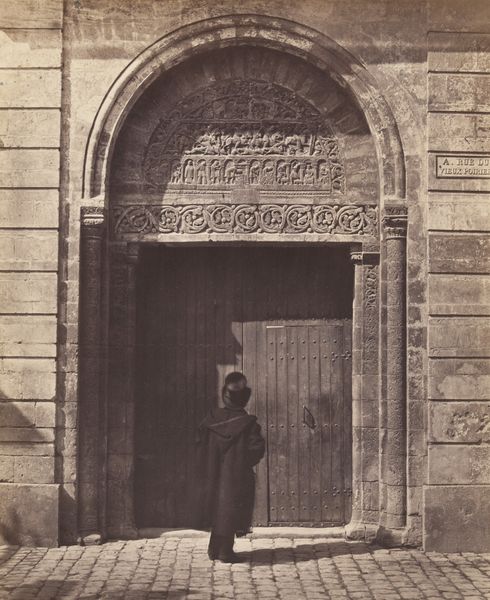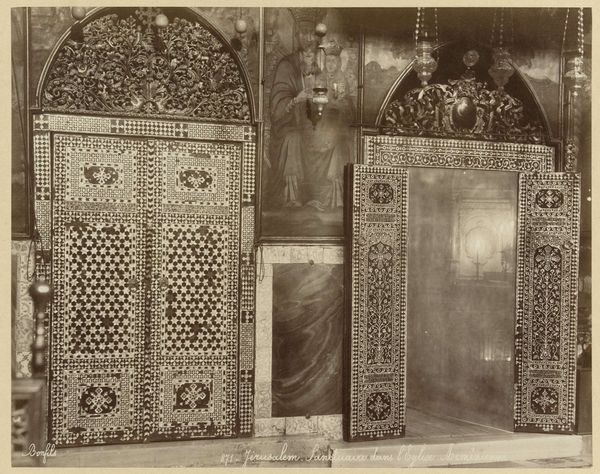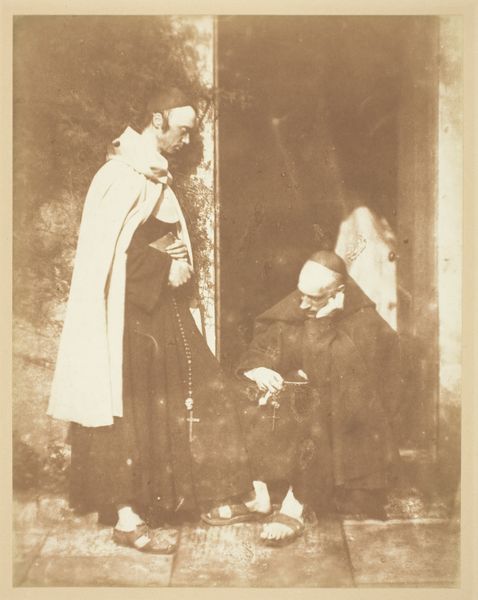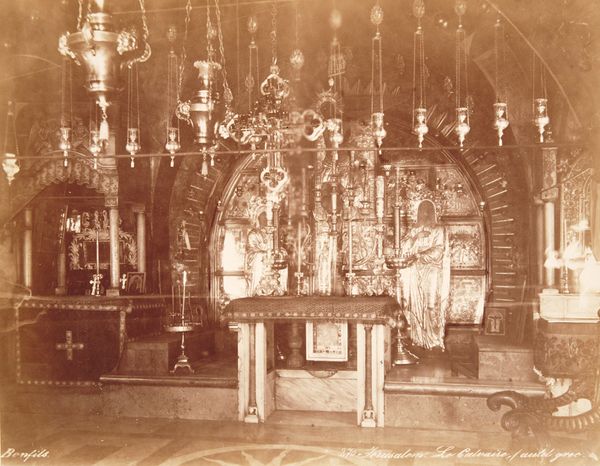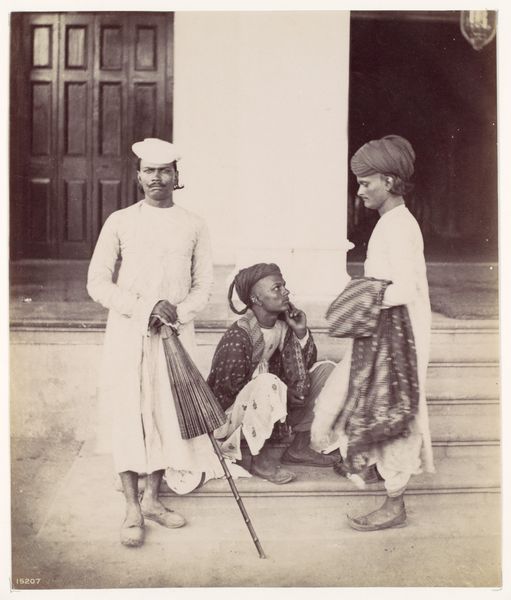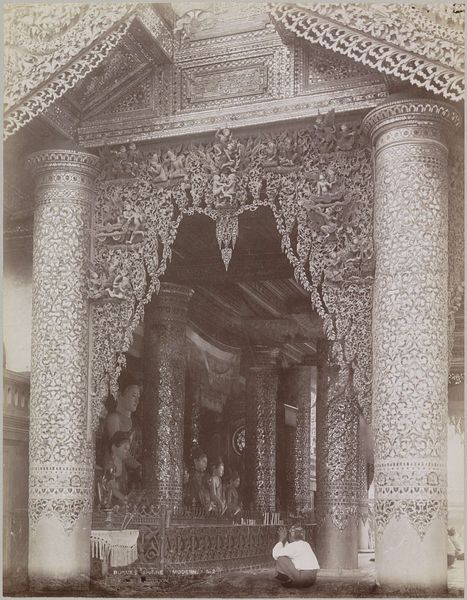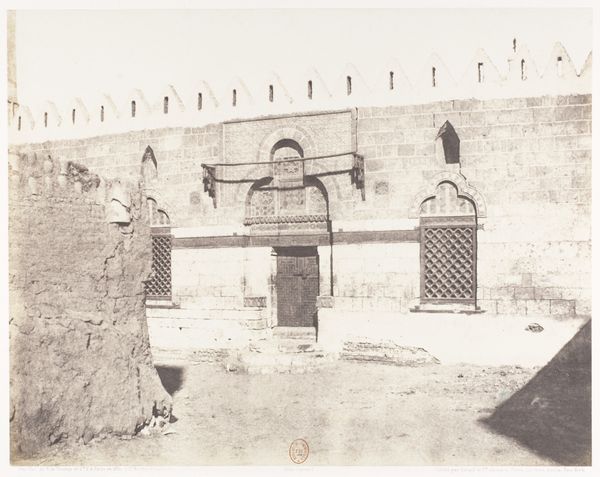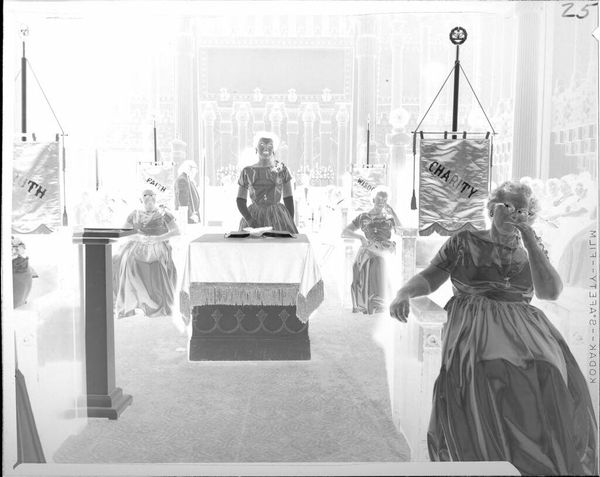
photogravure, photography
#
portrait
#
still-life-photography
#
photogravure
#
photography
#
historical photography
#
orientalism
#
19th century
#
islamic-art
#
genre-painting
Dimensions: 7 3/8 x 5 3/4 in. (18.73 x 14.61 cm) (image)10 5/8 x 7 5/8 in. (26.99 x 19.37 cm) (sheet)
Copyright: No Copyright - United States
Curator: What a perfectly still image! We are looking at "A Cairene Cafe", a photogravure dating to around the turn of the 20th century, now housed here at the Minneapolis Institute of Art. Editor: My immediate reaction is one of tranquility, and almost… anticipation. The lighting, the figures at repose... it's remarkably staged yet somehow feels candid. The patterned shadows on the floor create a captivating contrast. Curator: That's a keen observation. This piece exists within the visual culture of Orientalism, a Western fascination—and often misrepresentation—of Middle Eastern and North African cultures. It invites us to consider the power dynamics at play during the colonial era, where such scenes were romanticized and exoticized for Western audiences. Editor: I see those visual hallmarks clearly. But looking closer, those lattices aren't just decorative, are they? The geometric patterns, that repetition... It makes me wonder what other traditions and belief systems they symbolize. What type of social roles might that be hinting at in terms of who is kept inside, who might have a public role and so on... Curator: You’re quite right, of course. Such details offer valuable clues about domestic space, gender roles, and social stratification within Cairene society at that time. Genre paintings were often about creating narratives, ones which fit neatly into how Europe wanted to view this part of the world. Editor: So even those gleaming coffee pots there are charged. Is it supposed to convey some exotic and ritualized aspect to drinking a simple coffee? To some Westerners, were objects such as these invested with powers or special significance? Curator: Precisely. Images like these played a significant role in constructing and disseminating Western perceptions of the East. By focusing on the leisurely atmosphere and exotic details, it both reinforced and helped manufacture certain historical narratives about Egypt as seen through the eyes of travelers and colonizers. Editor: It’s powerful how an image capturing what seems like an ordinary, peaceful moment can reveal complex webs of cultural assumptions and social inequalities, right? Curator: Indeed, "A Cairene Cafe" provides both a visual pleasure and a vital moment to question the very context that allowed for the image's production. Editor: An encounter like that is vital. Thanks.
Comments
No comments
Be the first to comment and join the conversation on the ultimate creative platform.
